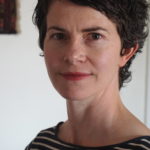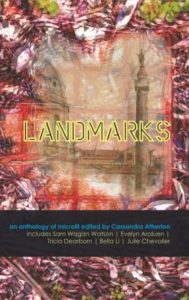 This week we talk to Tess Pearson about her piece ‘Fly-in, Fly-out’ which appears in Landmarks, the latest anthology curated by Spineless Wonders. During this interview Tess describes Australian landmarks of personal significance to her, who inspires her writing and what inspired her micro-lit piece.
This week we talk to Tess Pearson about her piece ‘Fly-in, Fly-out’ which appears in Landmarks, the latest anthology curated by Spineless Wonders. During this interview Tess describes Australian landmarks of personal significance to her, who inspires her writing and what inspired her micro-lit piece.
Tell us about a landmark that is significant to you
Trees are what stand out when I think about landmarks that have been important to me. When I returned from living overseas for some years, I was awestruck by Sydney’s Moreton Bay Fig Trees – how huge and strange and majestic they are. They are significant landmarks to me.
What inspired you to write ‘Fly-in, Fly-out’?
I was thinking in a very literal way about how we make marks on the land, and what kind of story these marks tell us about our relationship with the land. Wounds are something my writing brings me back to a lot (physical, metaphysical and psychological wounds), and I guess mines are an obvious way to explore the idea of a wounded landscape.
How do you find the experience of writing to a theme?
It can be a helpful starting point, anchor, or lens.

Describe your writing space
One of the things I love about writing is that it can be done almost anywhere. I sometimes like to write outdoors, or at a café, if I’m writing something new, otherwise usually at my desk or a library for re-writes and edits.
Tell us about a writer or work that has inspired you as a writer
This is always such a difficult question to answer. Audre Lorde is a writer I admire, who has created work across different mediums: poetry, ‘biomythography’ and essays, all of which are brilliant.
Tess Pearson is a Sydney-based writer of prose and poems. She holds a Master of Arts in Creative Writing, and has published short fiction in the UTS anthology, Hide Your Fires, Swamp, Short & Twisted, and Spineless Wonders’ Out of Place. Tess is currently working on a piece of long-form historical fiction set in Australia in the 1800s, and a research project on trauma and literature.
Feature image via Flickr.com

